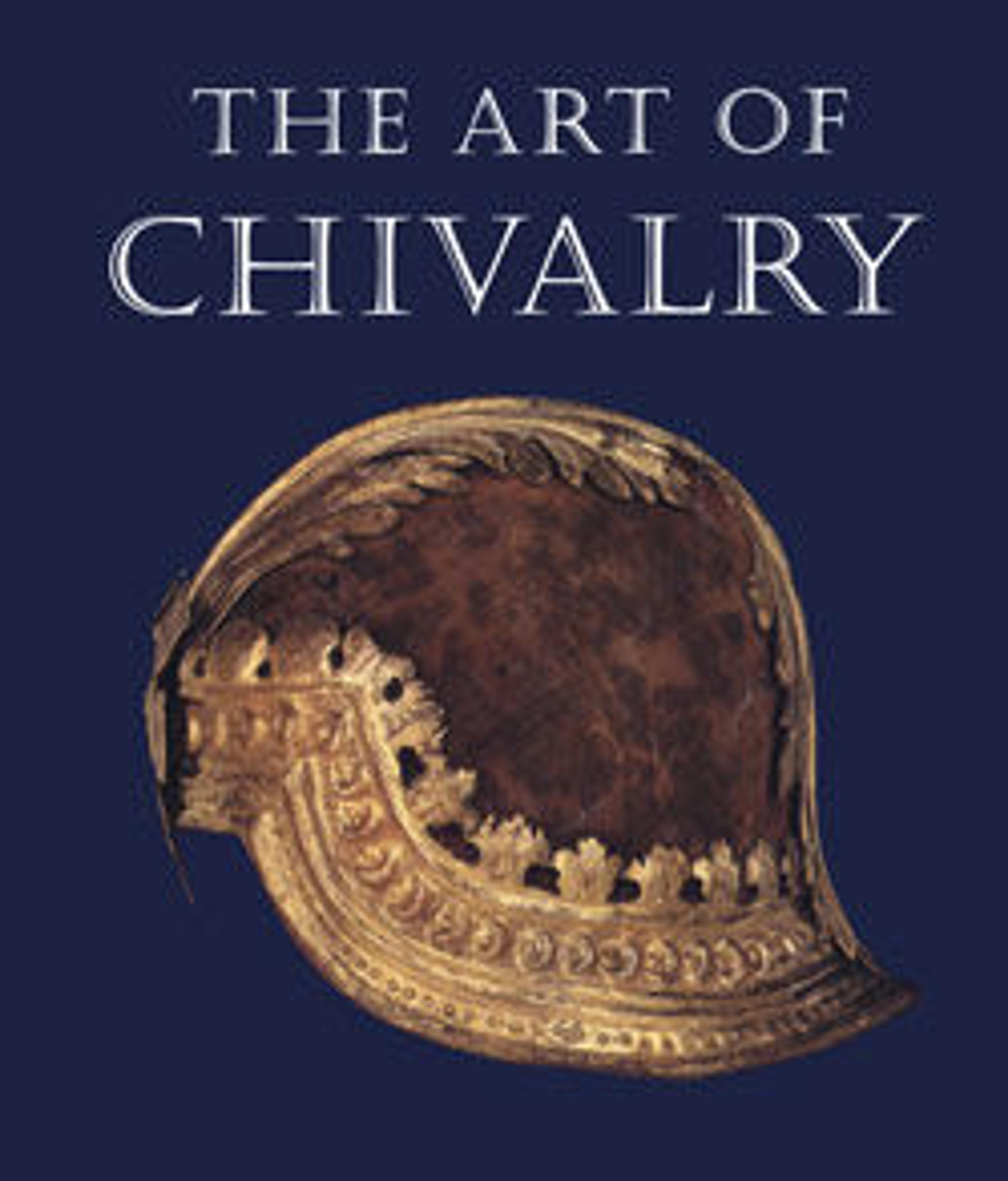Fist Shield
The shield is trapezoidal in outline and longitudinally convex in its median section, with the side edges slightly bent forward. It is reinforced around its edges with hammered turns and the semiglobular heads of the rivets, which once held the lining. A framework of six steel rods is riveted to the surface to stop and entrap an opponent's blade. The hook in the center could also serve this function, but its main purpose was for carrying the shield attached to a waist belt, with its grip on the outside ready to be grasped. The grip is secured by steel straps bridging the hollow of the median ridge.
Since the thirteenth century, small round bucklers faced with steel had been used in sword fencing; when not in use they were usually hung from the belt or over the sword hilt. The quadrangular shield with a hollow mid-ridge is of eastern European origin, and appeared in the fourteenth century as the Lithuanian targe; originally these targes were of wood covered with leather to prevent splitting. In the sixteenth century, formal fencing was practiced with rapier and parrying dagger, though conservative fencers retained round or square bucklers, enhanced with cunning devices such as the catch hook. Both techniques are illustrated in the woodcuts of the treatise Opera nova, 1536, by the Bolognese fencing master Achille Marozzo.
Since the thirteenth century, small round bucklers faced with steel had been used in sword fencing; when not in use they were usually hung from the belt or over the sword hilt. The quadrangular shield with a hollow mid-ridge is of eastern European origin, and appeared in the fourteenth century as the Lithuanian targe; originally these targes were of wood covered with leather to prevent splitting. In the sixteenth century, formal fencing was practiced with rapier and parrying dagger, though conservative fencers retained round or square bucklers, enhanced with cunning devices such as the catch hook. Both techniques are illustrated in the woodcuts of the treatise Opera nova, 1536, by the Bolognese fencing master Achille Marozzo.
Artwork Details
- Title:Fist Shield
- Date:16th century
- Culture:Italian
- Medium:Steel
- Dimensions:H. 11 13/16 in. (30 cm); W. 11 13/16 in. (30 cm); Wt. 2 lb. 13.4 oz. (1286 g)
- Classification:Shields
- Credit Line:Gift of William H. Riggs, 1913
- Object Number:14.25.732
- Curatorial Department: Arms and Armor
More Artwork
Research Resources
The Met provides unparalleled resources for research and welcomes an international community of students and scholars. The Met's Open Access API is where creators and researchers can connect to the The Met collection. Open Access data and public domain images are available for unrestricted commercial and noncommercial use without permission or fee.
To request images under copyright and other restrictions, please use this Image Request form.
Feedback
We continue to research and examine historical and cultural context for objects in The Met collection. If you have comments or questions about this object record, please contact us using the form below. The Museum looks forward to receiving your comments.
